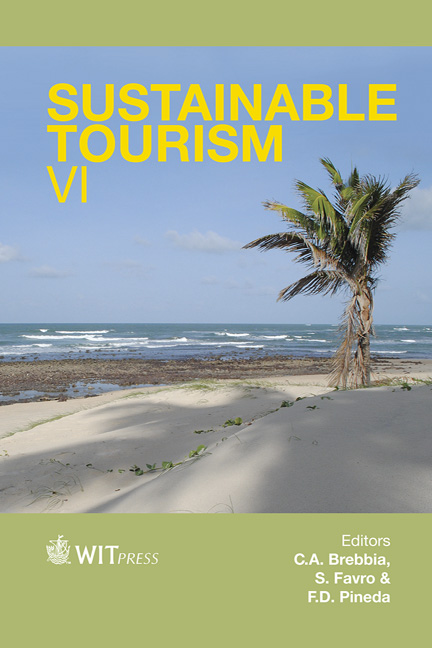Snow Flakes And Fates: What Hope Is There For Alpine Winter Tourism?
Price
Free (open access)
Transaction
Volume
187
Pages
13
Published
2014
Size
2,518 kb
Paper DOI
10.2495/ST140231
Copyright
WIT Press
Author(s)
A. Fischer
Abstract
The rapid development of Alpine winter tourism and related infrastructures during the last century raises the question of development prospects against the background of climate change and sustainability. Today, amongst other macroscale forcings, snow is considered a precondition for winter tourism. The aim of this study is to investigate past climate change for four communities in Tyrol in relation to the number of overnight stays, and to compare the variability of the current climate with the bandwidth of future scenarios. This is done by analysing i) trends of air temperature, humidity and snow and ii) the statistical correlation of these parameters with the number of overnight stays. The height and duration of natural snow cover show high interannual variability. As a technical response, snow production has developed rapidly. Applying a Mann-Kendall test to the wet-bulb temperatures recorded at three Tyrolean climate stations reveals that the time frames when snow production is possible have changed most at medium elevations, but have so far not exceeded a few days at the beginning and the end of the winter season. In contrast to summer mean temperatures, winter mean temperatures have not changed significantly during the last 3 decades, and the range of interannual variability was about three times that of the most extreme temperature change calculated for future climate scenarios. Therefore it is very likely that the average future winter climate means will be within the range of the past century’s records, and snow cover and temperature changes are minor macroscale forcings, so they are not factors that would delimit the future developments of Alpine winter tourism.
Keywords
climate change, winter tourism, snow production, ski tourism, snow cover.





